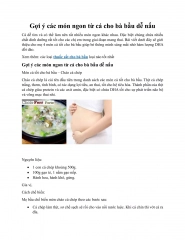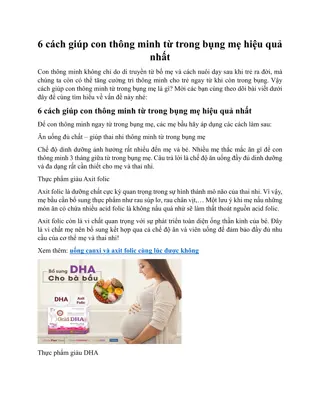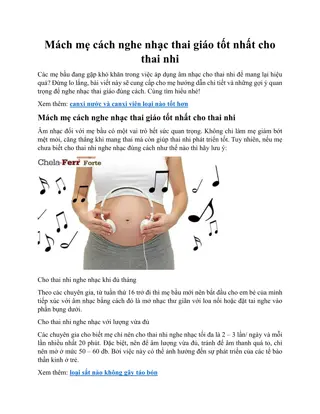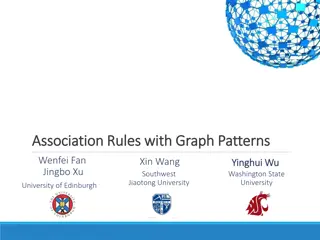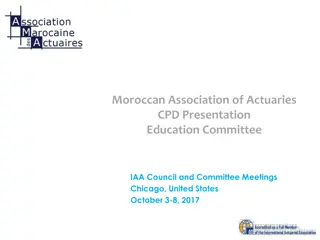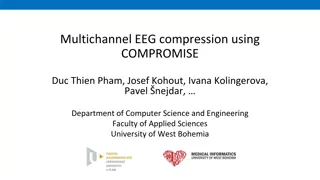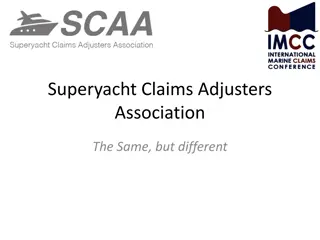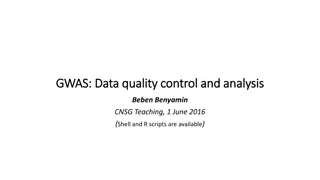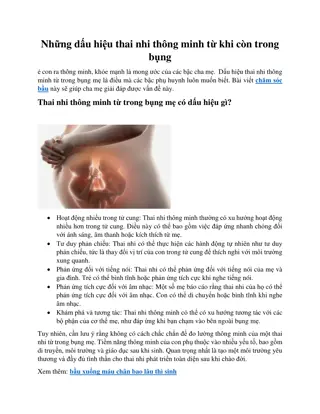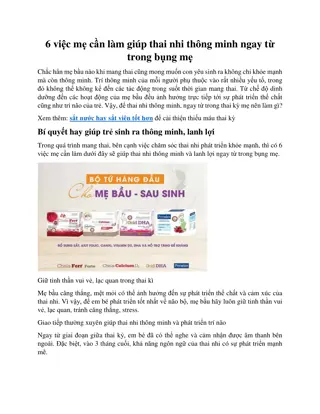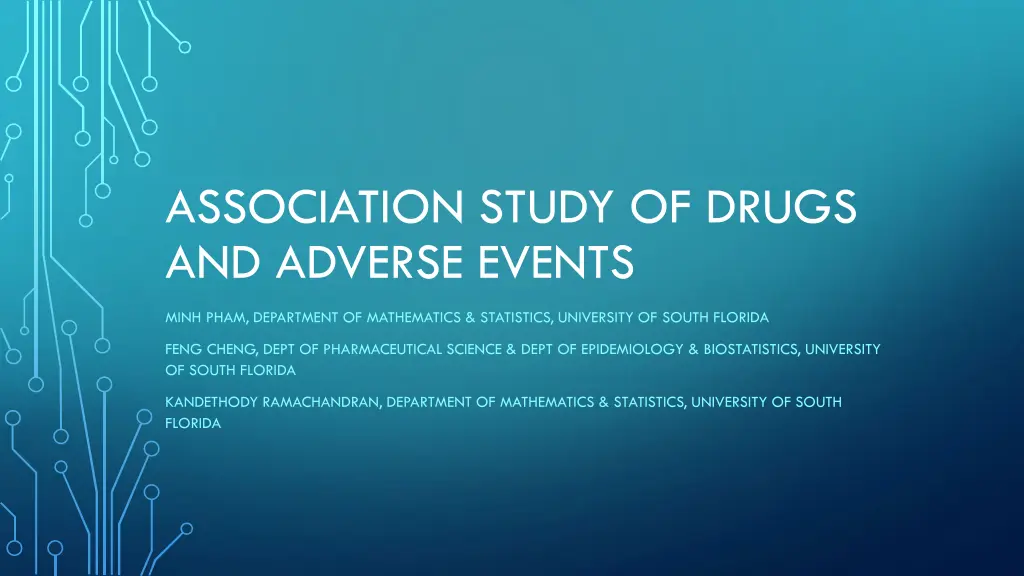
Association Study of Drugs and Adverse Events in Pharmacovigilance
Explore the use of statistical methods to automate signal detection of drugs' side effects from the FAERS database, addressing challenges of data sparseness and vast drug-related adverse events. Learn about methods like Disproportionality, Bayesian Confidence Propagation Neural Network, and Gamma-Poisson Shrinkage model through a literature review.
Download Presentation

Please find below an Image/Link to download the presentation.
The content on the website is provided AS IS for your information and personal use only. It may not be sold, licensed, or shared on other websites without obtaining consent from the author. If you encounter any issues during the download, it is possible that the publisher has removed the file from their server.
You are allowed to download the files provided on this website for personal or commercial use, subject to the condition that they are used lawfully. All files are the property of their respective owners.
The content on the website is provided AS IS for your information and personal use only. It may not be sold, licensed, or shared on other websites without obtaining consent from the author.
E N D
Presentation Transcript
ASSOCIATION STUDY OF DRUGS AND ADVERSE EVENTS MINH PHAM, DEPARTMENT OF MATHEMATICS & STATISTICS, UNIVERSITY OF SOUTH FLORIDA FENG CHENG, DEPT OF PHARMACEUTICAL SCIENCE & DEPT OF EPIDEMIOLOGY & BIOSTATISTICS, UNIVERSITY OF SOUTH FLORIDA KANDETHODY RAMACHANDRAN, DEPARTMENT OF MATHEMATICS & STATISTICS, UNIVERSITY OF SOUTH FLORIDA
WHAT IS THE PROBLEM AND WHY Adverse Event AE1 Drug Preliminary detection of drugs side effects For regulators For the public D1 D2 AE2 D3 AE3 Automate signal detection from the FAERS database Which statistical method can drive this process? Challenges: Too many drugs and AEs Sparseness of the data Dp AEq 2
WHAT IS THE PROBLEM AND WHY primaryid D1 D2 D3 Dp AE1 AE2 AE3 Aeq 88438052 0 0 1 0 0 0 0 0 53841413 0 0 0 0 0 0 1 0 77175049 0 0 1 0 1 0 0 0 62598515 0 0 0 0 0 0 0 0 37699682 0 0 0 0 0 0 0 0 65866064 1 0 0 0 0 1 0 0 18502693 0 0 0 0 0 0 0 0 3 59014545 0 0 0 0 0 0 0 0
OUTLINE Methods in the literature A gold standard for comparison study Results of comparison study Future consideration 4
METHODS IN THE LITERATURE Disproportionality (Univariate) methods: Drug ?? Other drugs a b Effect ?? Other effects c d ?/(?+?) ?/(?+?) Proportional Reporting Ratio ??? = ?/? ?/? Reporting Odds Ratio ??? = 5
METHODS IN THE LITERATURE Bayesian Confidence Propagation Neural Network (BCPNN) Drug ?? Other drugs ?11 ?10 Effect ?? Other effects ?01 ?00 ?! ? ?11,?10,?01,?00|?,?11,?10,?01,?00 = ?10?01 ?01?00 ?00 ?11?10 ?11!?10!?01!?00!?11 ?11,?10,?01,?00 ~ ???(?11,?10,?01,?00) ?(?11) ? ?1.?(?.1)) ?(???? ?) = log2( 6
METHODS IN THE LITERATURE Gamma-Poisson Shrinkage model (GPS) ???= ?=1 ?????? : count of drug i and event j ???~??????? ??? ??? ? ~ ??????? ?? 2 ????? ???????????? Use posterior distribution of ? to raise signal Drug ?? Other drugs ? a b Effect ?? Other effects c d 7
METHODS IN THE LITERATURE Disproportionality analysis: Frequentist: PRR and ROR Bayesian: BCPNN and GPS Going multivariate: Reason: multi-pharmarcy primaryid D1 D2 D3 Dp AE1 AE2 AE3 Aeq 88438052 1 0 1 0 1 0 0 0 8
METHODS IN THE LITERATURE Logistic Regression (LR): ? ??= 1 1 ? ??= 1 ????? ? ??= 1 = log = ???? Regression-adjusted Gamma-Poisson Shrinkage Model (RGPS): ? ???? ???? 1 + ? ???? ???? ???= Then regular GPS 9
METHODS IN (OTHER) LITERATURE Need improvement: drug interaction Borrowed ideas from Genome-wide Association Study: Random Forests: rank drugs by variable important Monte Carlo Logic Regression: ? ????? ? ??= 1 = ?0+ ???? ?=1 10 ??= ? ?1= 1 ??? ?2= 1 or ??= ?( ?1 1 ??? ?2= 1 ?? ?3 1)
THE TESTING BED Observational Medical Outcomes Partnership (OMOP) Gold Standard Made by expert consensus 165 positive controls 233 negative controls 11
AREA UNDER CURVE & SPEED Method AUC Method Computing Time 8.04 minutes 0.7091 Logistic Reg RGPS 12.73 minutes 0.6939 PRR BCPNN 0.6803 12.73 minutes GPS ROR 0.6653 12.73 minutes ROR GPS 0.6604 12.81 minutes Logistic Reg BCPNN 0.6514 PRR RGPS 14.13 minutes 0.5850 17 MC Logic Reg MC Logic Reg 14.21 minutes 0.5208 Random Forests 8.17 hours Random Forests
FUTURE DEVELOPMENT Methods to detect drug interactions without specifying GPS and RGPS: can be improved by using EM algorithm to estimate parameters instead of Newton-type algorithm Automate the screening process and make public 18
REFERENCES Evans, S. J. W., Waller, P. C., & Davis, S. (2001). Use of proportional reporting ratios (PRRs) for signal generation from spontaneous adverse drug reaction reports. Pharmacoepidemiology and drug safety, 10(6), 483-486. Rothman, K. J., Lanes, S., & Sacks, S. T. (2004). The reporting odds ratio and its advantages over the proportional reporting ratio. Pharmacoepidemiology and drug safety, 13(8), 519-523. Waller, P., Van Puijenbroek, E. P., Egberts, A. C. G., & Evans, S. (2004). The reporting odds ratio versus the proportional reporting ratio:'deuce'. Pharmacoepidemiology and drug safety, 13(8), 525-526. DuMouchel, W., & Pregibon, D. (2001, August). Empirical bayes screening for multi-item associations. In Proceedings of the seventh ACM SIGKDD international conference on Knowledge discovery and data mining (pp. 67-76). ACM. DuMouchel, W. (1999). Bayesian data mining in large frequency tables, with an application to the FDA spontaneous reporting system. The American Statistician, 53(3), 177-190. DuMouchel, W., Fram, D., Yang, X., Mahmoud, R. A., Grogg, A. L., Engelhart, L., & Ramaswamy, K. (2008). Antipsychotics, glycemic disorders, and life-threatening diabetic events: a Bayesian data-mining analysis of the FDA adverse event reporting system (1968 2004). Annals of Clinical Psychiatry, 20(1), 21-31. Ryan, P. B., Madigan, D., Stang, P. E., Marc Overhage, J., Racoosin, J. A., & Hartzema, A. G. (2012). Empirical assessment of methods for risk identification in healthcare data: results from the experiments of the Observational Medical Outcomes Partnership. Statistics in medicine, 31(30), 4401-4415. A. Liaw and M. Wiener (2002). Classification and Regression by randomForest. R News 2(3), 18--22. Kooperberg, C., & Ruczinski, I. (2011). LogicReg: Logic Regression. R package version, 1(10). Bate, A., Lindquist, M., Edwards, I. R., Olsson, S., Orre, R., Lansner, A., & De Freitas, R. M. (1998). A Bayesian neural network method for adverse drug reaction signal generation. European journal of clinical pharmacology, 54(4), 315-321. 19

